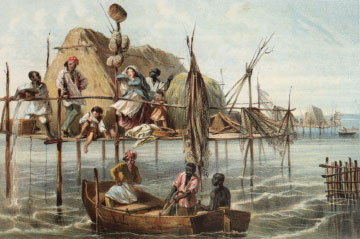Atlantic Free Black Communities

Across the Americas, racialized slavery constrained the lives of Africans and their descendants. Although political and commercial leaders attempted to put in place barriers to freedom and emancipation, free black communities existed throughout the Atlantic world. Enslaved people gained freedom though many different avenues: some were manumitted by their owners, some ran away, some were freed for military service, and others purchased their own freedom. These opportunities, however, were not always equally available. In Spanish America, for example, self-purchase was legally protected; but in British North America, colonial (and later, state) laws restricted owners’ ability to free their own slaves.
These free communities often faced difficult circumstances as they tried to exist on the border between enslavement and full freedom. Free people of color often moved to cities or towns where they hoped to find some security in both anonymity and wage labor. In all parts of the Atlantic, they faced legal or social discrimination. The possibility of capture and re-enslavement, even for people who had been legally manumitted, was a constant threat.
Still, these communities persisted despite the dangers. People of African descent who had been born free frequently became active supporters of abolitionist movements. They built networks of communication to help give runaways and newly-freed people shelter and aid. Those who had fled to freedom, like Frederick Douglass, offered powerful testimony about their experiences in bondage. In many places, free black communities showed their dedication to freedom and justice as they served in the wars of the Age of Revolutions.






